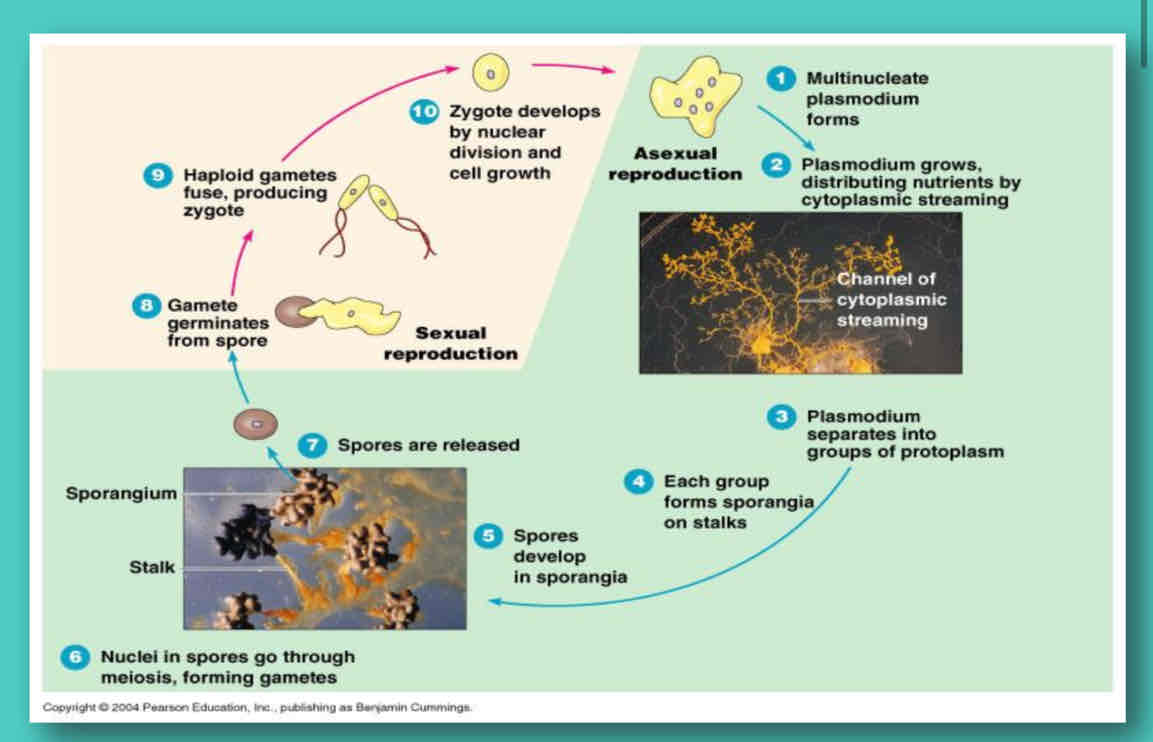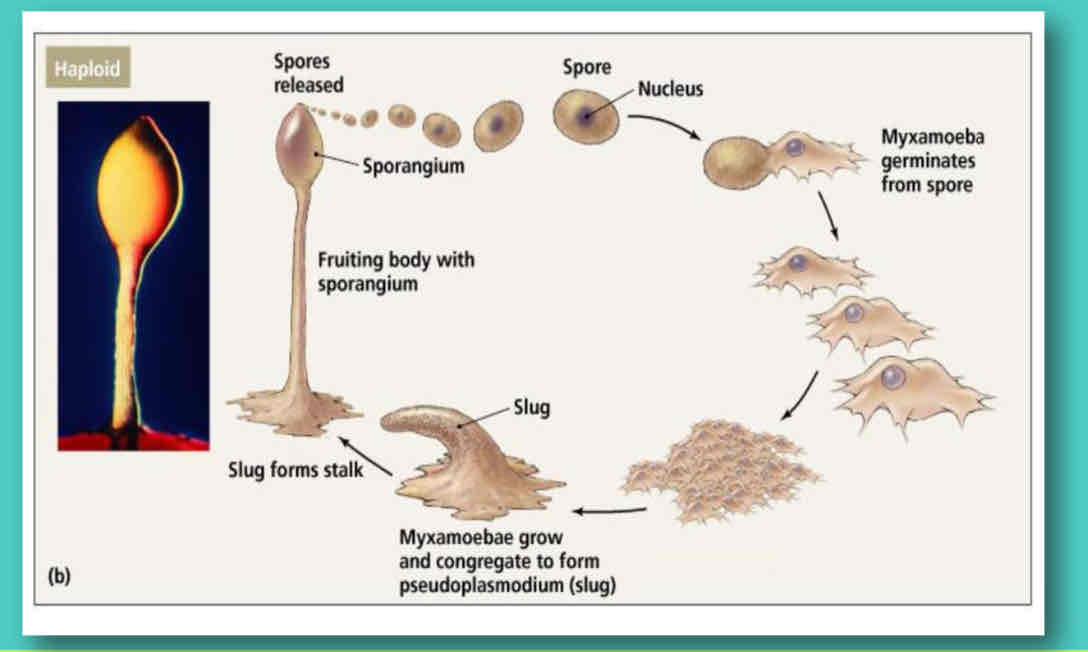Slime molds
1/10
There's no tags or description
Looks like no tags are added yet.
Name | Mastery | Learn | Test | Matching | Spaced |
|---|
No study sessions yet.
11 Terms
Slime molds
Was formerly considered another group of amoebozoa-to be fungi
lobe-shaped pseudopodia
by which they feed and move as well as their nucleotide sequences show that they are amoebozoa.
plasmodial molds and cellular molds.
2 types of slime molds
Lack cells and phagocytic
Slime molds differ form true fungi in two main ways:
lack cell walls, phagocytic
1) They _____, more closely resembling amoebae in this regard.
(2) They are ____ rather than absorptive in their
morphology, reproduction, and 18SrRNA sequences.
- Species in the two groups of slime molds differ based on their _____
developmental and molecular biology
Slime molds are important to humans primarily as excellent laboratory systems for the study of ___
Plasmodial (Acellular) Slime Molds (e.g. Physarum)
Exist as streaming, coenocytic, colorful filaments of cytoplasm that creep as amoebae through forest litter, feeding by phagocytizing debris and bacteria.
Cellular Slime Molds (Dictyostelium)
Exist as individual haploid myxamoebae that phagocytize bacteria, yeast, dung, and decaying vegetation.
Plasmodial (Acellular) Slime molds (e.g Physarum)

Cellular Slime Molds (Dictyostelium)
